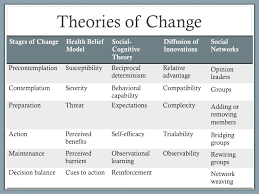
Community Health Strategy
Order Instructions:
for this paper, the writer must pay attention to details. The writer should carefully read all instructions before attempting the assignment. The writer must clearly respond to all items listed in the questions while clearly following the template provided using proper APA as indicated. The writer must use the chosen topic and must also clearly show the chosen model as indicated in the paper.
Community Health Strategy
Advance practice nurses can be found in every aspect of the health care field including out in the community. Advanced practice nurses not only care for the client but all aspects that surround their clients. In this assignment you will focus on promoting the health of the community. You will choose a topic concerning women’s health. In a 5 to 6 page APA formatted paper you will create and discuss a community health promotion that pertains to your topic. Make sure to:
1. Identify your chosen topic and the demographic area and population that you are targeting. The chosen Topic is (Vulvovaginal infections and sexually transmitted infections). The demography area and population is the African-American population in the Washington DC Metro area.
2. Discuss why this topic is important to this group (include background information) with references.
3. Use one community based health promotion model.
4. Discuss how this model was used in the creation of this community health promotion strategy.
5. Include your community health promotion strategy.
Assignment Requirements
The finished Assignment should be 4 pages minimum Analytical essay, encompassing all required items listed. The viewpoint and purpose of this Assignment should be clearly established and sustained.
Before finalizing your work, you should:
• be sure to read the Assignment description carefully
• consult the Grading Rubric (under the Course Home) to make sure you have included everything necessary;
• utilize spelling and grammar check to minimize errors; and
• review APA formatting and citation information found in the KU Writing Center, online, or elsewhere in the course.
Your assignment should:
• follow the conventions of Standard American English (correct grammar, punctuation, etc.);
• be well ordered, logical, and unified, as well as original and insightful;
• display superior content, organization, style, and mechanics;
• use APA 6th edition format for organization, style, and crediting sources including:
• properly formatted header
• 12-point, double-spaced, Times New Roman font
• use of in-text citations
• title page and reference page
• use of headings (if applicable)
SAMPLE ANSWER
Community Health Strategy
The health of communities is the priority of nurse practitioners. Studying diseases among different populations and in varied regions improves the understanding of nurses, and therefore facilitates patient care. Other than attending patients directly, nurses require establishing strategies that would benefit their communities on health matters.
Studying a particular type of disease in a narrow population could lead to more effective community health strategies. With such type of a study, nurses can identify issues that could not have been determined through studies that are too general.
Population, Demographic Area and Disease Identification
The essay explores Sexually Transmitted Infections (STIs) among African Americans residing within Washington DC. The paper emphasizes on vaginal as well as vulvar infections.
Vulvovaginal Infections and Sexually Transmitted Infections
Among the commonest health hazards striking the female gender are the reproductive tract infections. Often, infections on either the vagina or the vulva lead to the inflammation of the respective organ. Women can acquire reproductive system infections either through sexual intercourse or other means. Common vaginal and vulva infections include those of protozoon, viral or bacterial origins.
Trichomoniasis, gonorrhea, HIV/AIDS, vaginosis, herpes, chlamydia infection, and syphilis are just but examples of highly prevalent Sexually Transmitted Infections (STIs). While some infectious agents limit their damaging effects to the reproductive system, some such as HIV/AIDS virus extend to other body systems. Different populations face unequal risks to most of the infections. Among the infections causing vaginal and vulvar inflammation are genital candidiasis, trichomoniasis as well as vaginosis (Moreira Mascarenhas, Sacramento Cunha Machado,Borges da Costa e Silva,FernandesWeyll Pimentel, Teixeira Ferreira,Silva Leoni, &Grassi, 2012, Pg. 1)
Prevalence of STIs among the African Americans in Washington
Brown, Sales, DiClemente, Salazar, Vanable, Carey, and Stanton (2012) reported that African Americans in general have a disproportionate exposure to STIs (Pg. 1491). Research indicates that among other STIs, chlamydia infection and gonorrhea are most prevalent, especially among female adolescents within the African American population (Brow et al., 2012, Pg. 1491). With Chlamydia, for example, Center for Disease Control and Prevention (CDC) found from research that cases of the disease are six times higher in black women than they are in their white counterparts. For the males, as CDC further indicated, occurrence of chlamydia was nine times higher in the blacks as compared to the whites (2012).
The Importance of Studying Vulvovaginal Infections and Sexually Transmitted Infections among Black Americans in Washington DC
So many factors necessitate the study of STIs among African Americans. Investigations are not only important for the African Americans in Washington, but also for those in America at large.
Background information
Black Americans constitute 4% of the population in Washington DC (United States Census Bureau, 2015). Owing to their high predisposition to STIs, African Americans are worth special attention. Again, the varied nature of STIs calls for effective interventions.
Considering their numbers, African Americans are among the minority groups, both in Washington DC and in the US at large. In most cases, minority groups encounter hardships while accessing certain services in the community. As such, the minoritiesgroups end up receiving care of lower value than that enjoyed by the majorities.Financial strains and other barriers among populations limit their access to health care services.Nijhawan, Chapin, Salloway, Champion, Roberts and Clark (2012) wrote that for trichomoniasis, for example, lack of quality gynecological care accounts for high number of cases among minority populations (Pg. 3).
African Americans Face High Risk to a Variety of STIs
A number of findings indicate disproportionality in the predisposition of African Americans to STIs. Swartzendruber, Sales, Brown, DiClemente and Rose for instance, indicated that women within the group face higher risk for both HIV/AIDS and trichomonasvaginalis (2014, Pg. 240). Other infections to which African Americans depict higher predisposition than normal include gonorrhea, chlamydia and syphilis (CDC, 2012). Owing to the facts and the current research findings established, it is important to study STIs among African Americans.
Community Based Health Promotional Model
To fight STIs among African Americans, one of the most applicable strategies include the Community Organization Model of Health Promotion.
Concepts of the Community Organization model
In the model, healthcare practitioners take a central position toward promotion of health in the community. To implement measures, healthcare workers rely on the community for support and material resources (US department of Health and Human Services, 2011, Pg. 8). With the method, healthcare practitioners cooperate with social organizations such as learning institutions and religious groups to pursue the common goal of health promotion (US Department of Health and Human Services, 2011, Pg. 8).
Advantages of Using the Community Organization Model
The Community Organization Model allows nurses to associate with the society. Through the model, nurses and other healthcare professionals can help the community in identifying problems within their environment. For instance, nurses can sensitize African Americans on their high predisposition to sexual illnesses. After understanding their situation, people within the population would take more precautions to protect themselves. The community would also get involved for the promotion of their own health. It would be easier solving the menace with optimal involvement of the affected population.
How Community Organization Model was used in the Creation of Health Promotion Strategy
The community organization model motivated the strategy that aimed at promoting the health of African Americans.
The Activities Involved
Community assessment was performed, and it was established that there was need for the study of vulvovaginal infections, as well as STIs among African Americans. The model also motivated the involvement of clinicians in addressing the situation. Usually, community organization model requires cooperation between the members of the society and healthcare practitioners (U.S Department of Health and Human Services, 2011, Pg. 9).
The Expected Outcomes after the Application of the Model
Since the model connected clinical care providers to the community, the health of African Americans was expected to improve. The clinicians would offer necessary information to the community on matters concerning their sexual health. Interaction between involved parties would facilitate the move toward a healthier society.
Improvement of Sexual Health among African Americans as aCommunity Health Promotion Strategy
Sexual behavior was found to be an essential element in the high occurrence of STIs among African Americans (Brown et al., 2012, Pg. 1493). The public therefore, need knowledge on safe methods of participating in sexual activities. Again, education on practices that would reduce infection through non-sexual practices is necessary. Employing an educative strategy would help in community health promotion. Nurses can offer the education needed by the community.
Conclusion
Following the raised risk for STIs among African Americans, relevant bodies need to work tirelessly to promote the health of the population. Stakeholders need to employ effective strategies that would offer the best outcomes. When addressing a health issue affecting an entire population, methodologies applied need to take a communal approach, rather than focusing on singular patients. To reduce the susceptibility of African Americans to vulvovaginal infections and STIs, clinicians and other health advisory groups need educating the population. They should sensitize the community on its high susceptibility to the infections, in addition to offering it the protective measures.
References
Brown, J. L., Sales, J. M., DiClemente, R. J., Salazar, L. F., Vanable, P. A., Carey, M. P., … Stanton, B. (2012). Predicting Discordance between Self-reports of Sexual Behavior and Incident Sexually Transmitted Infections with African American Female Adolescents: Results from a 4-city Study. AIDS and Behavior, 16(6), 1491–1500.
Center for Disease Control and Prevention. (2012). STDs in Racial and Ethnic Minorities. Retrieved http://www.cdc.gov/std/stats12/minorities.htm
Moreira Mascarenhas, R. E., Sacramento Cunha Machado, M., Borges da Costa e Silva, B. F., FernandesWeyll Pimentel, R., Teixeira Ferreira, T., Silva Leoni, F. M., &Grassi, M. F. R. (2012). Prevalence and Risk Factors for Bacterial Vaginosis and Other Vulvovaginitis in a Population of Sexually Active Adolescents from Salvador, Bahia, Brazil. Infectious Diseases in Obstetrics and Gynecology, 2012, 1-6.
Nijhawan, A. E., Chapin, K. C., Salloway, R., Andrea, S., Champion, J., Roberts, M., & Clarke, J. G. (2012). Prevalence and Predictors of Trichomonas Infection in Newly Incarcerated Women. Sexually Transmitted Diseases, 39(12), 1-14.
Swartzendruber, A., Sales, J. M., Brown, J. L., DiClemente, R. J., & Rose, E. S. (2014). Correlates of Incident Trichomonasvaginalis Infections Among African American Female Adolescents. Sexually Transmitted Diseases, 41(4), 240–245.
U.S Department of Health and Human Services. (2011). Community Health Workers Evidence-Based Models Toolbox HRSA Office of Rural Health Policy. Retrieved June 7, 2015 from http://www.hrsa.gov/ruralhealth/pdf/chwtoolkit.pdf
United States Census Bureau. (2015). State and County Facts: Washington DC. Retrieved June 7, 2015 from http://quickfacts.census.gov/qfd/states/53000.html
We can write this or a similar paper for you! Simply fill the order form!












